Installing CentOS Stream 9
If your system meets all the requirements and you are okay with changes to CentOS Stream, we can process the installation. Let’s start with Downloading ISO and booting.
Step 1: Downloading CentOS Stream 9 ISO
First, visit its official page to download CentOS Stream 9. Once you are done with the download part, you can use any USB bootable tool such as Rufus, balenaEtcher, or Ventoy for flashing it on your drive (for bare-metal installation).
Now, boot from your bootable drive, and you will meet with the following screen. Choose the first option which will start the installer.
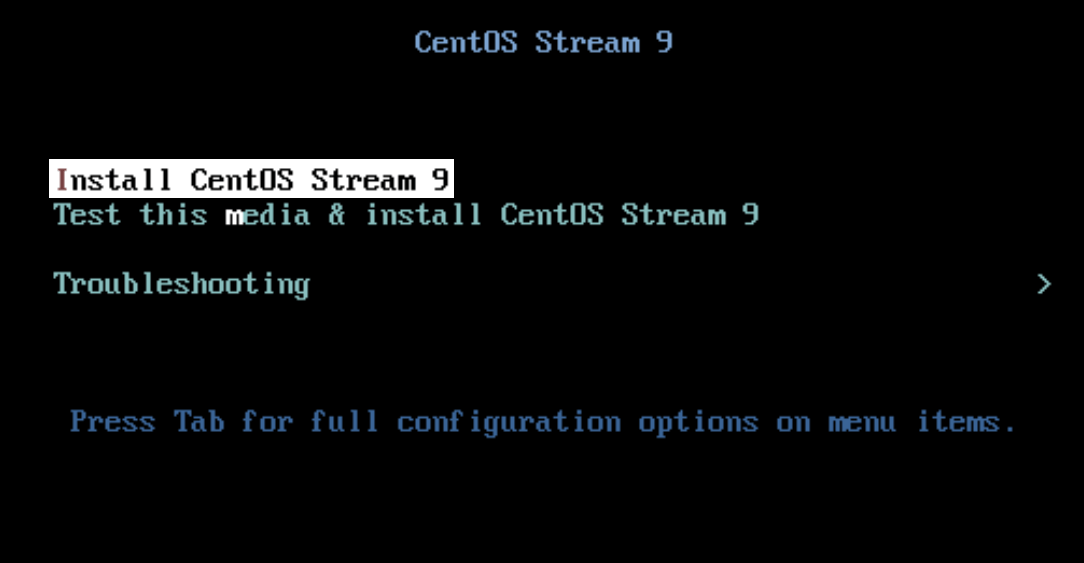
CentOS Stream Boot Menu
Step 2: Choose Installer Language
CentOS Stream uses the Anaconda installer which is one of the rare installers which has a separate prompt just for selecting installer language. You can choose what comforts you the most but for the majority, English will be the correct option and we are going with that.
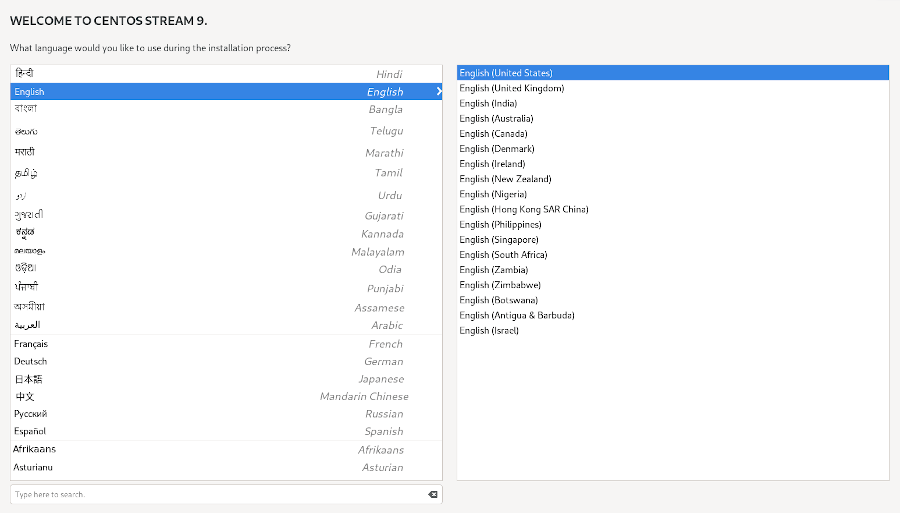 CentOS Stream Language
CentOS Stream Language
Step 3: Setting Up Localization
In this step, we are going to configure all the available options under the Localization section which are Keyboard, Language Support, and Time & Date. Let’s Start with Keyboard.
Select Keyboard Option.
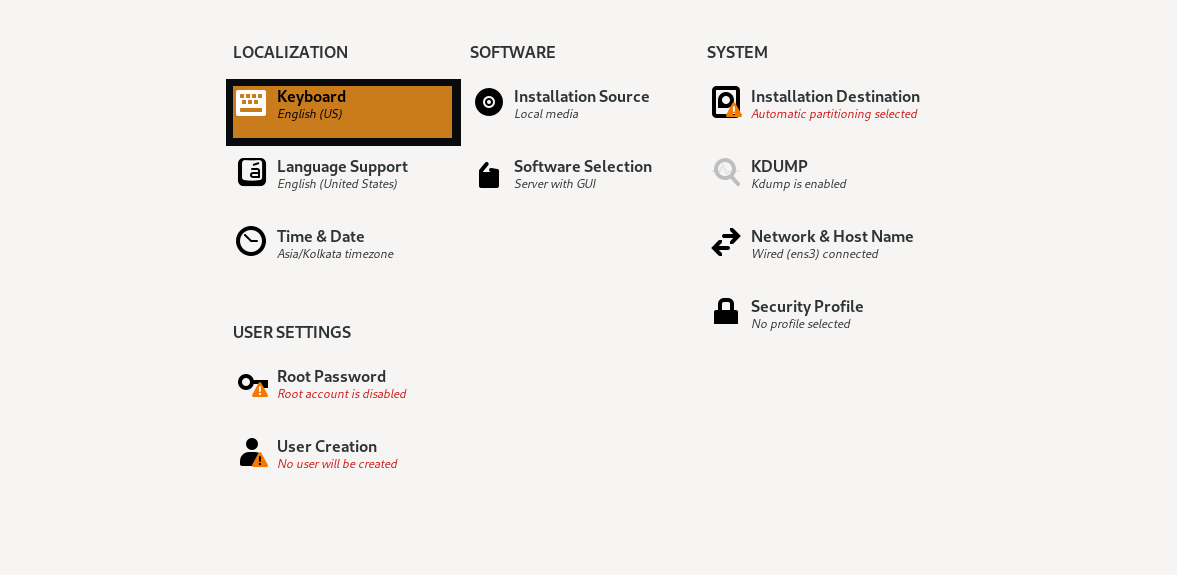 CentOS Stream Keyboard
CentOS Stream Keyboard
Now Click on Language Support where we can choose additional languages required by the user to work.
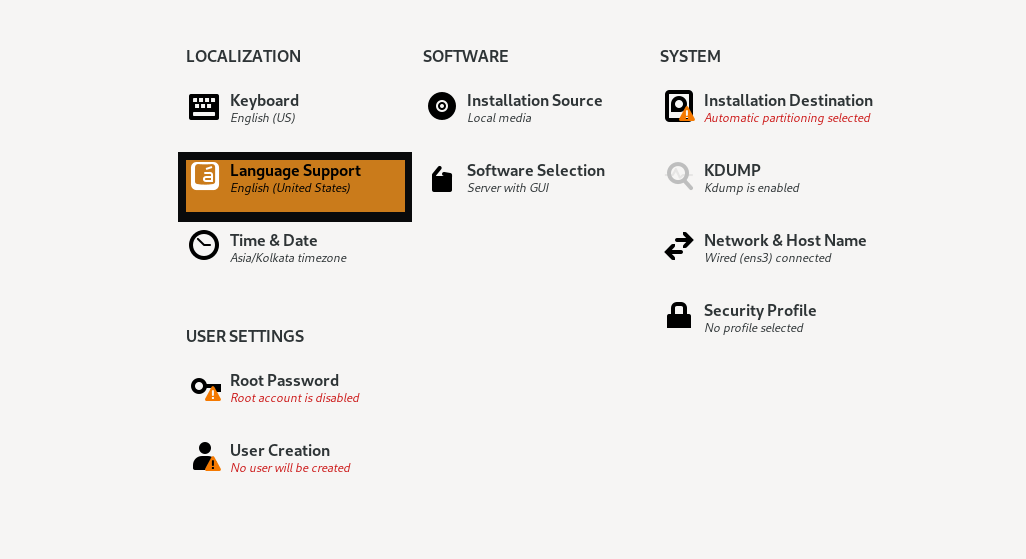 CentOS Stream Language Support
CentOS Stream Language Support
From here you can choose the additional language you want to get supported on your system. I only use English so I’m going with default options.
Select the last option in Localization labeled “Time & Date” to choose our region.
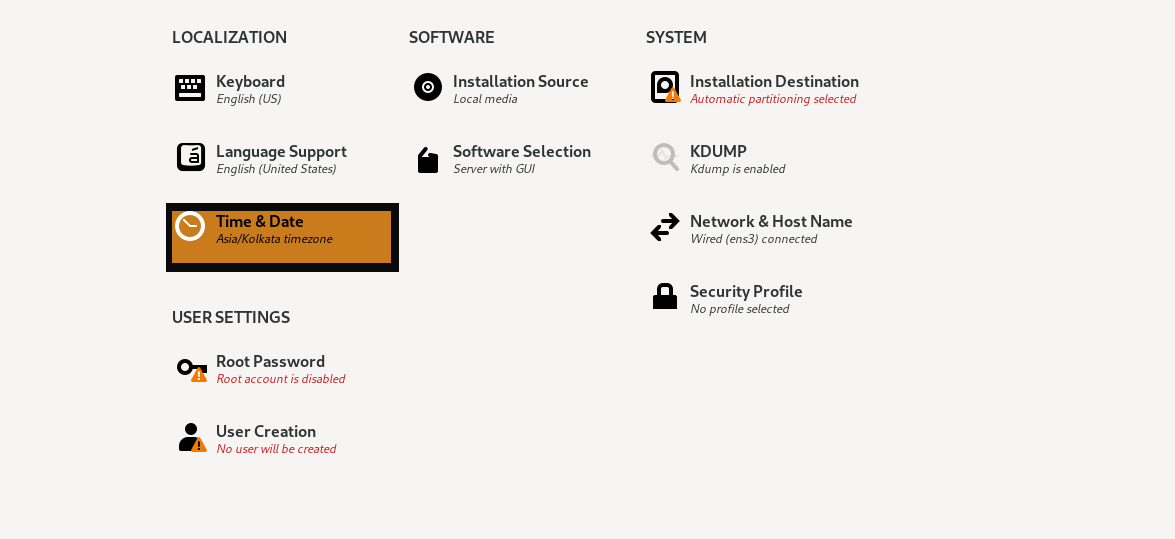 CentOS Stream Time and Date
CentOS Stream Time and Date
Form here, choose your region and city and click on Ok.
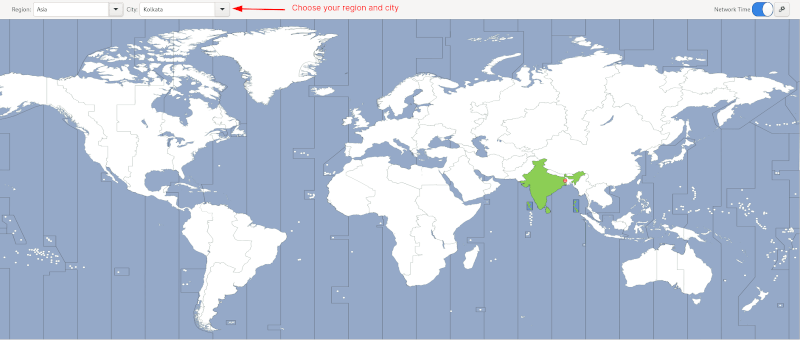 CentOS Stream Timezone
CentOS Stream Timezone
Step 4: Setting Up Software Options
In this step, we are going to choose the software required for our system. We will not make any changes to the installation source as it will automatically detect the local media. So let’s start with the Software selection.
Click on the 2nd option labeled as “Software Selection”.
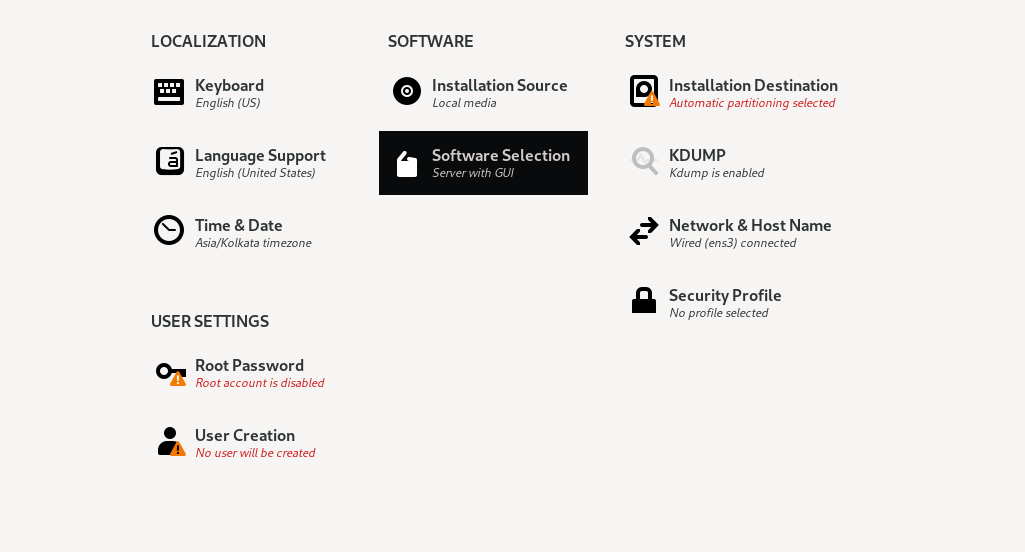 CentOS Stream Software
CentOS Stream Software
From here you can select the important tools you require. In our case we select minimal install
 CentOS Stream with GUI
CentOS Stream with GUI
Step 4: Choose Installation Drive
Click on Installation Destination which will direct us to the available disks.
 CentOS Stream Installation Destination
CentOS Stream Installation Destination
Select the desired disk. You have two options for partitioning your drive: manual and automatic. We would suggest automatic partitioning as it handles the size well but if you want to customize partitions, you can choose the other option.
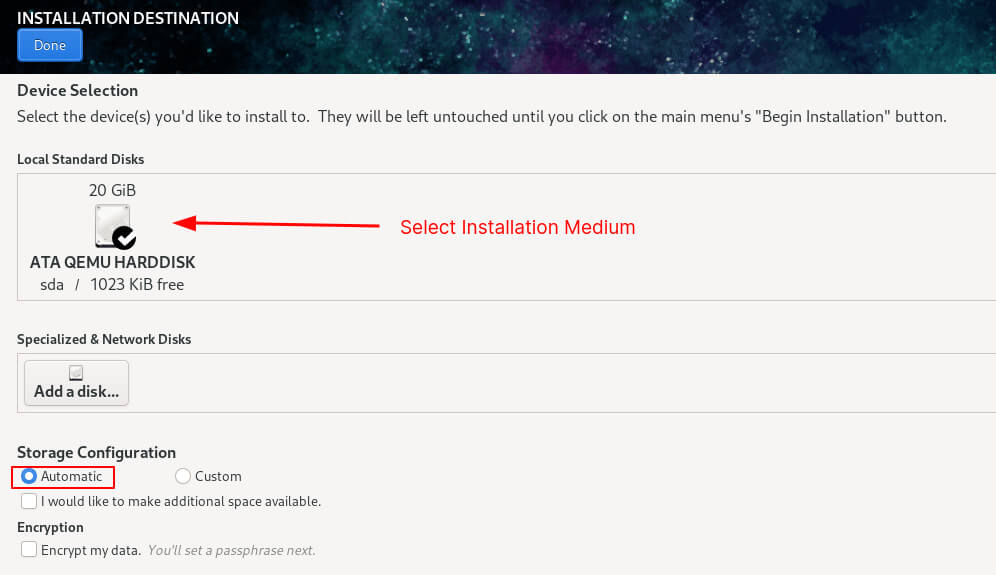 CentOS Stream Automatic Install
CentOS Stream Automatic Install
Step 6: Setting Network and Hostname
In this step, we are going to allocate the hostname to our system including setting up networking. Click on “Network & Hostname”.
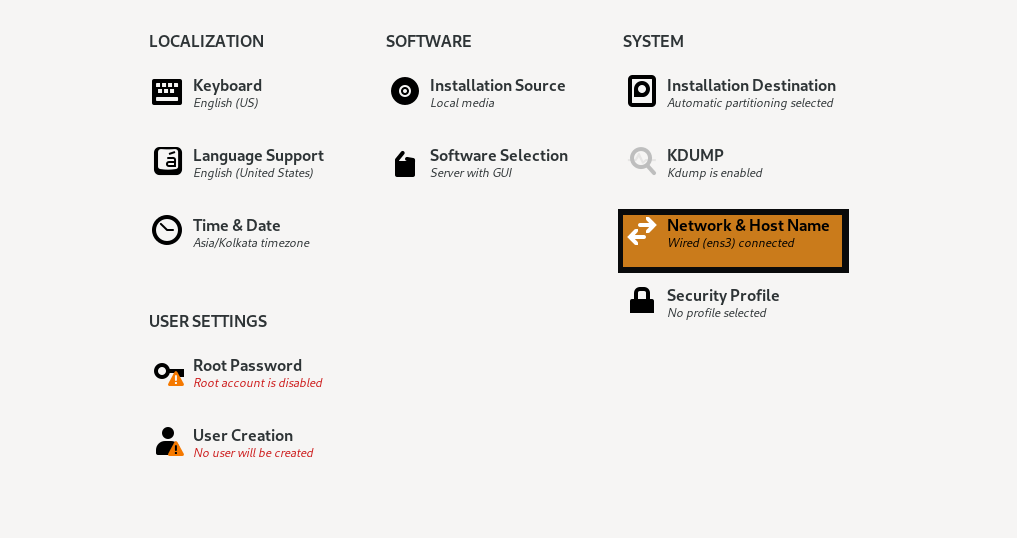 CentOS Stream Network
CentOS Stream Network
If you are using Ethernet, you just have to enable it by the given button. To allocate the hostname, you are given a separate section. In my case, I’m going to use tecmint.
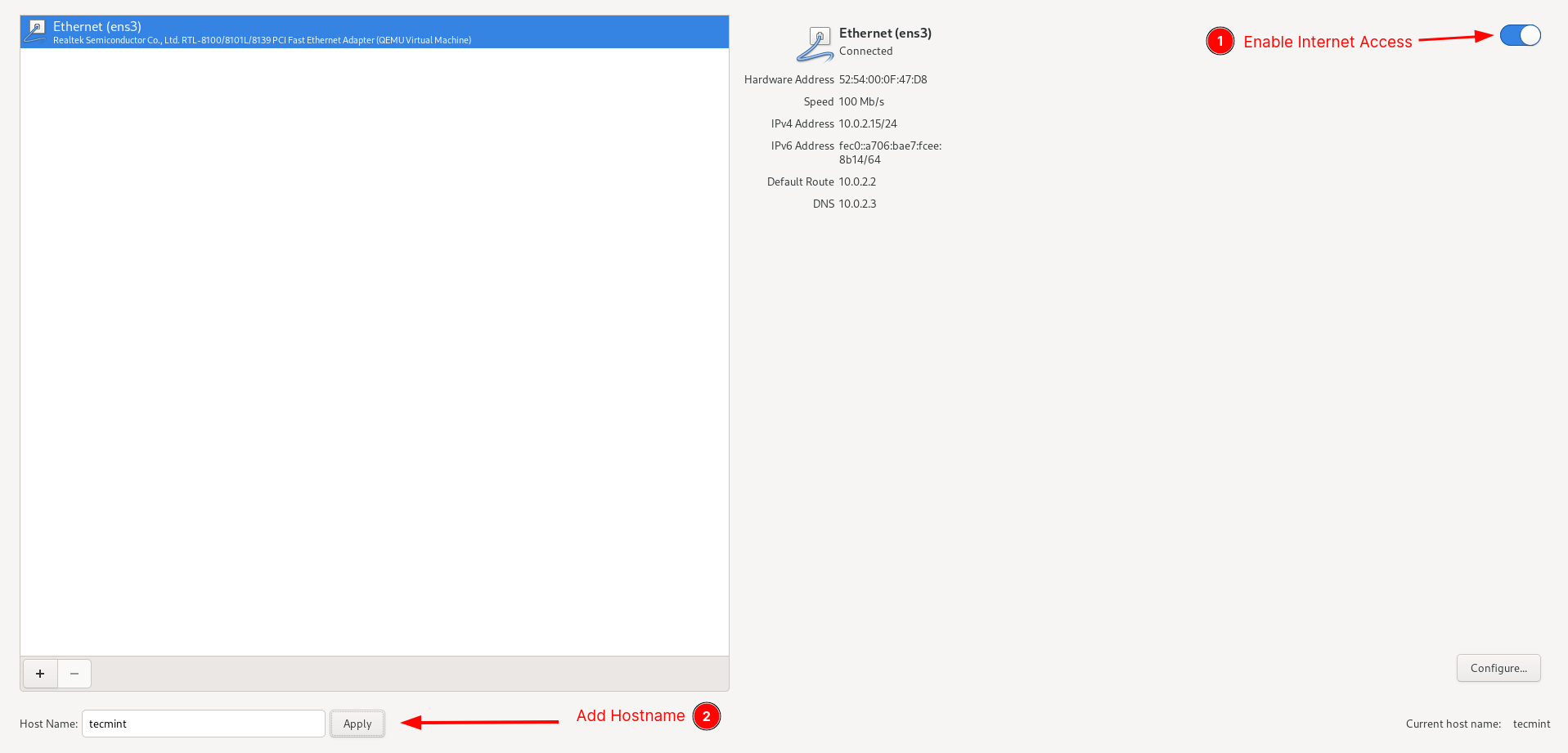 CentOS Stream Network Configure
CentOS Stream Network Configure
In case you are not using DHCP, click on Configure which will direct us to set up our network manually. From here, click on Ipv4 and choose the Manual method. Add your desired Address, Netmask and Gateway by clicking on Add button. In the end, add DNS and save the configuration.
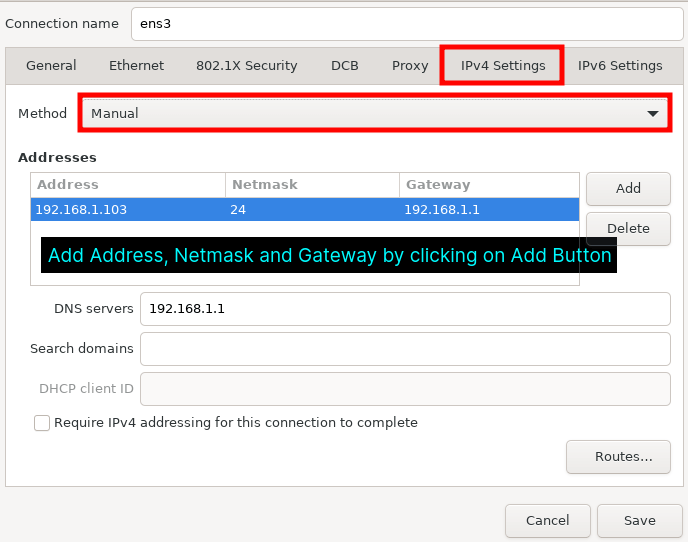 CentOS Stream Manual Network Configure
CentOS Stream Manual Network Configure
Step 7: Create a User Account
To create a user, click on the User creation option which will direct you to a prompt where you are going to add users and create a password.
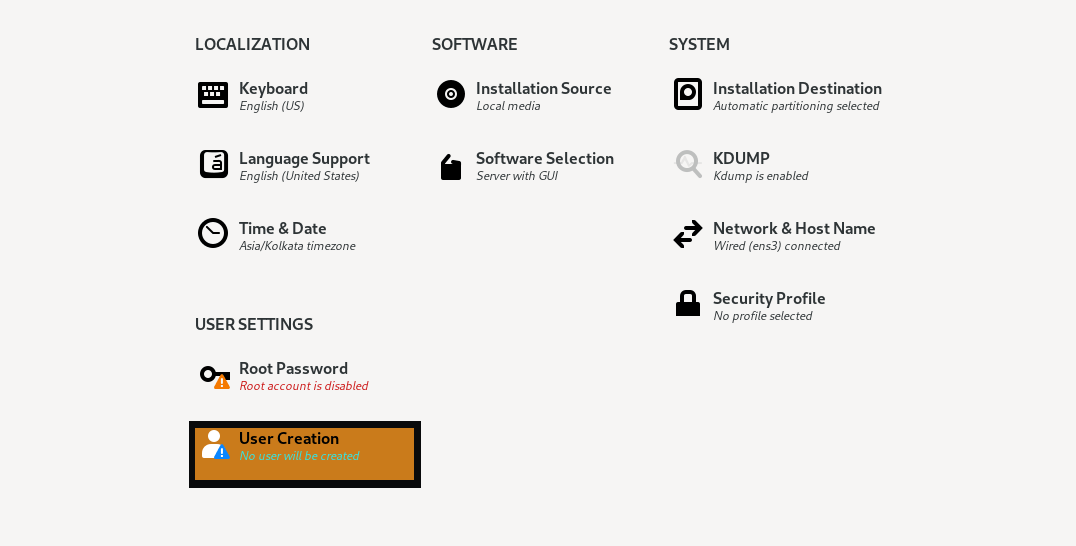 CentOS Stream User Account
CentOS Stream User Account
Enter details such as Full name, password, etc. If you want, you can make this user administrator by giving the option. We always recommend you use a strong password.
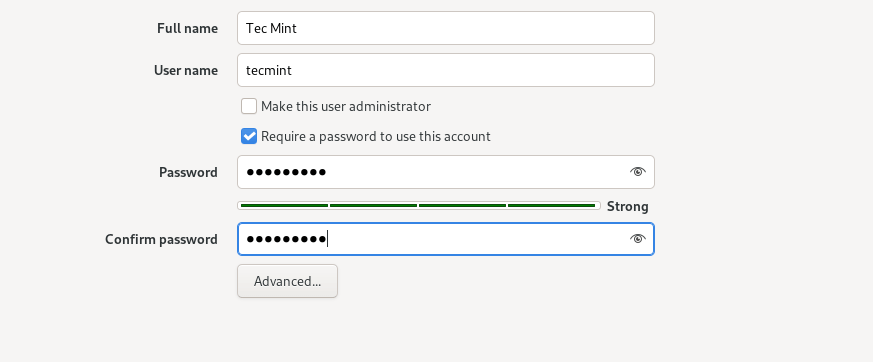 CentOS Stream User Details
CentOS Stream User Details
Once you are done with adding a user, Select “Root Password” which will allow us to create a root password for our existing user.
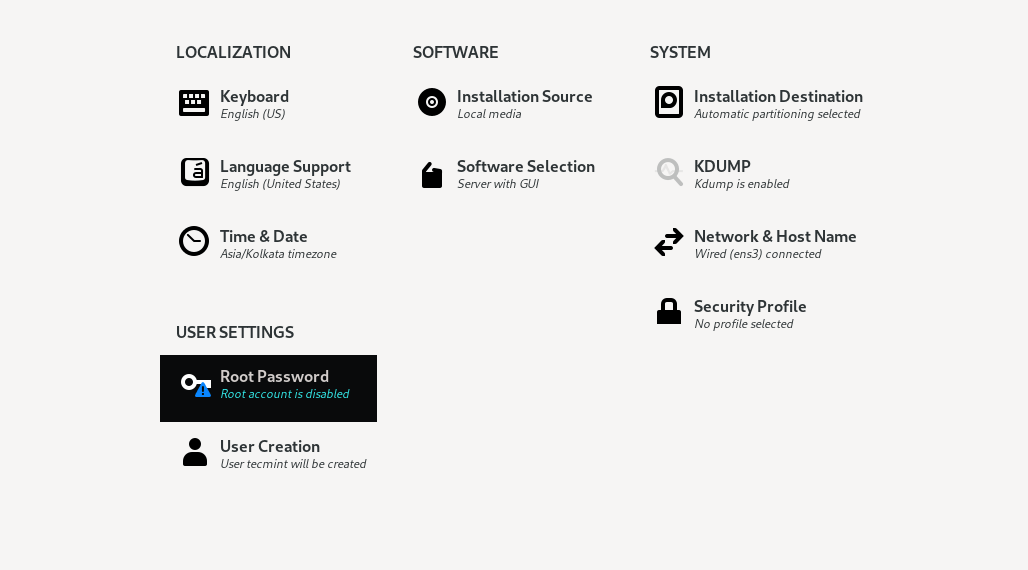 CentOS Stream Root Password
CentOS Stream Root Password
 Create Root Password
Create Root Password
Click on Begin installation button and it will start the installation process. Once the installation is complete, click on Reboot System.
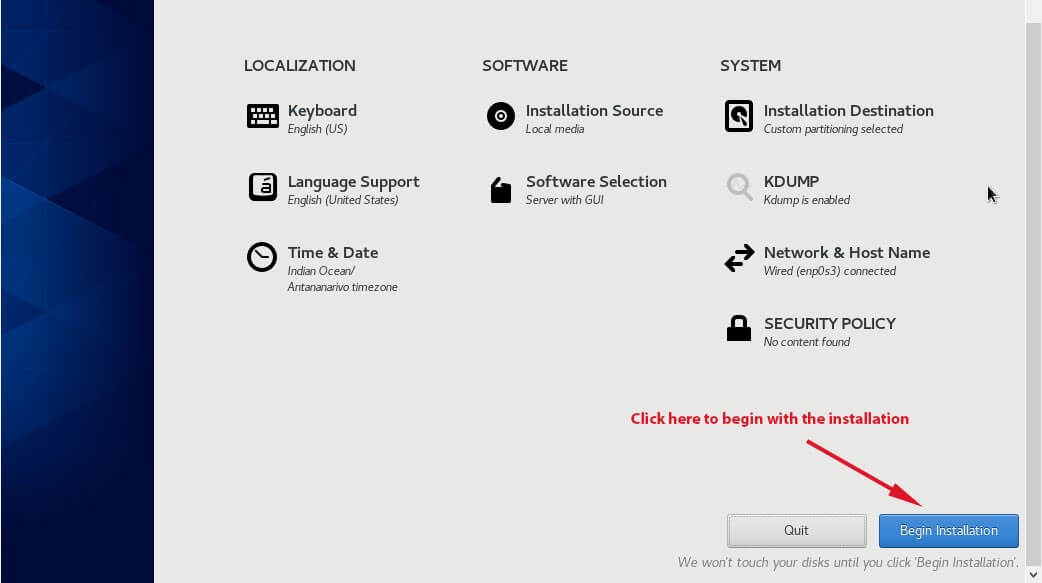 Begin CentOS Stream 9 Installation
Begin CentOS Stream 9 Installation
Log in to the CentOS system as the root user or a user with root privileges.**
Open a terminal or SSH into the CentOS system.
ssh user@IpaddressAdd the user to the "wheel" group by running the following command, replacing
usernamewith the actual username of the user you want to grant sudo privileges to:
usermod -aG wheel username
- Verify that the user has been added to the "wheel" group:
```id username```
Now, the user should have sudo privileges. They can use the
sudocommand to run commands with root privileges.For example, the user can run:
sudo commandNow enable LibeEdit-Devel
sudo dnf install libedit-develEnable the CRB repository for CentOS 9 Stream
Open a terminal on your CentOS 9 Stream system.
Use the following command to install the
epel-releasepackage, which includes the Extra Packages for Enterprise Linux (EPEL) repository:Once the
epel-releasepackage is installed, you can use the following command to install thednf-plugins-corepackage, which includes theconfig-managercommand:After installing the
dnf-plugins-corepackage, you can use the following command to enable the CRB repository:Finally, you can use the following command to verify that the CRB repository is enabled:
This command will display a list of the enabled repositories on your system, including the CRB repository.
The CRB repository should now be enabled on your CentOS 9 Stream system.